Graphic Published August 14, 2018 · 3 minute read
The Opportunity Crisis in Six Maps
Jim Kessler
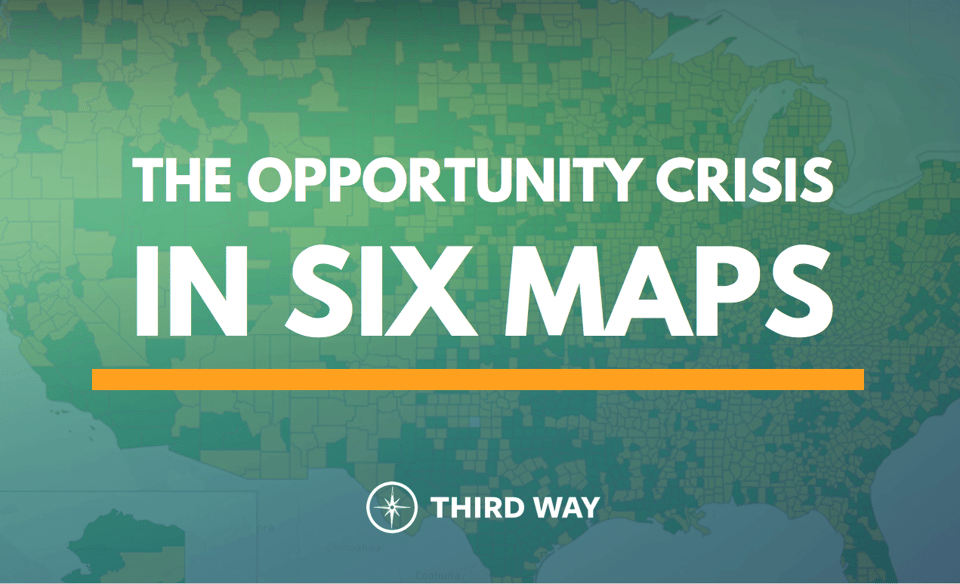
Between 2005 and 2015, the U.S. economy added 150,000 net new businesses. But the 2,109 counties shaded yellow below lost a total of 200,000 businesses along with 1.2 million private sector jobs. Here’s another way to look at it: in these yellow counties there were 200,000 fewer places to even apply for a job. These counties include large urban and diverse places like Cuyahoga County, OH; suburban areas like Clay County, MO; and rural regions like Barnes County, ND.
The 1,029 green counties added 350,000 net new businesses and 6.7 million jobs over the same 10 years. Opportunity both concentrated and bifurcated.
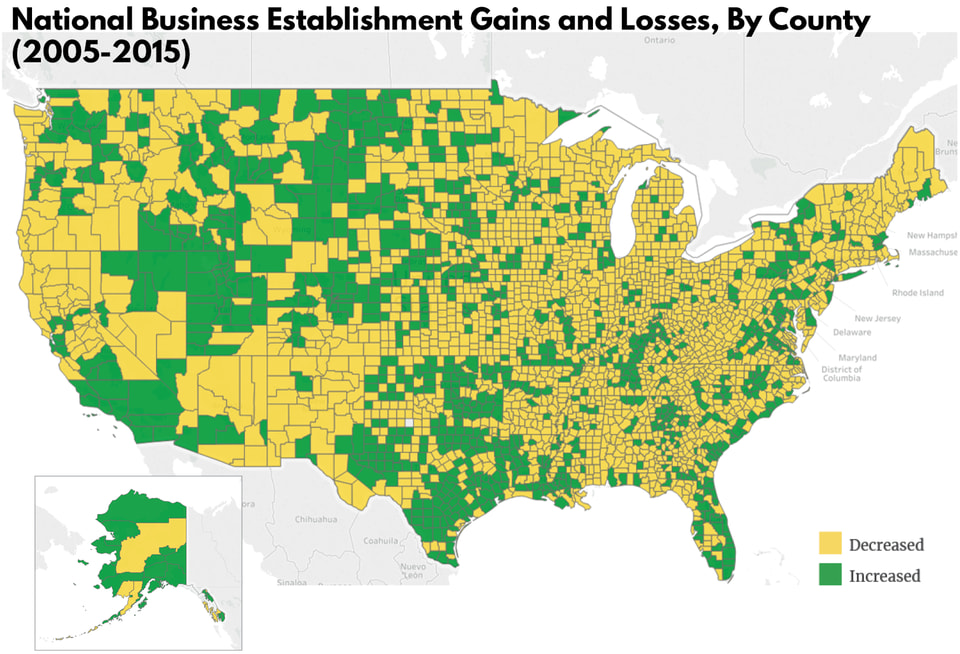
This concentration of opportunity is new. In the 10 years prior, from 1995 to 2005, the map is a sea of green! This was a lot of people’s lived experience – of businesses opening, not closing and more jobs, not fewer where they lived. Of course, even in these green counties there were pockets of despair based on longstanding economic and social problems like poverty and discrimination. But 2,168 counties gained businesses while only 964 counties lost them. And the counties that lost them over this period lost a lot fewer businesses than over the next 10 years.
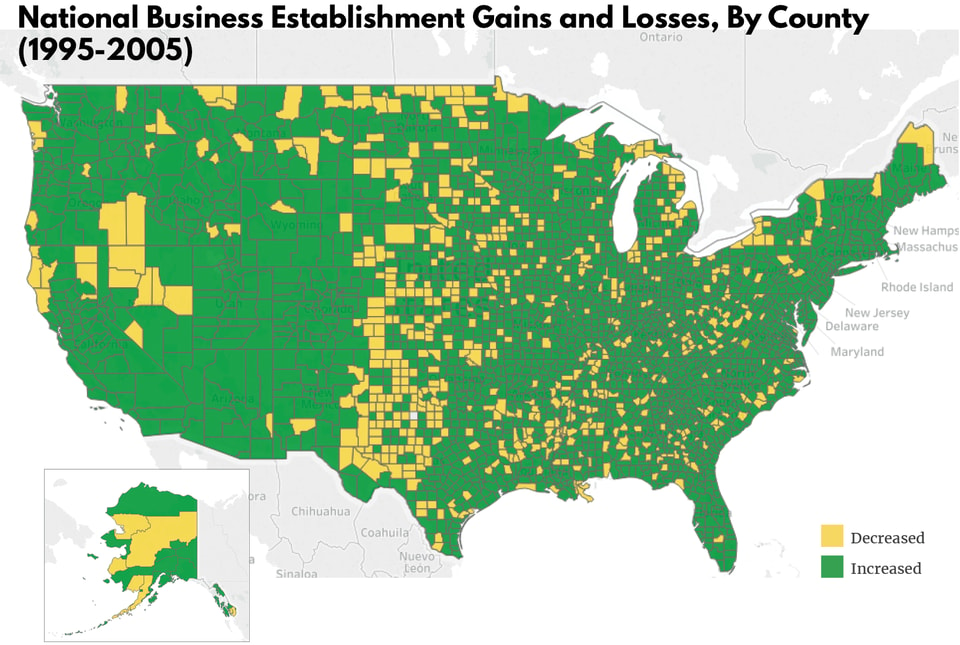
The opportunity crisis is not just an economic problem but a political one. If the 2016 election were held in only the 2,109 yellow counties that lost businesses between 2005 and 2015, Donald Trump would have won by 3.5 million votes, 53.0% to 47.0%, and by an electoral college landslide of 343 to 195. In places where opportunity was falling voters were willing to take a chance on Trump.
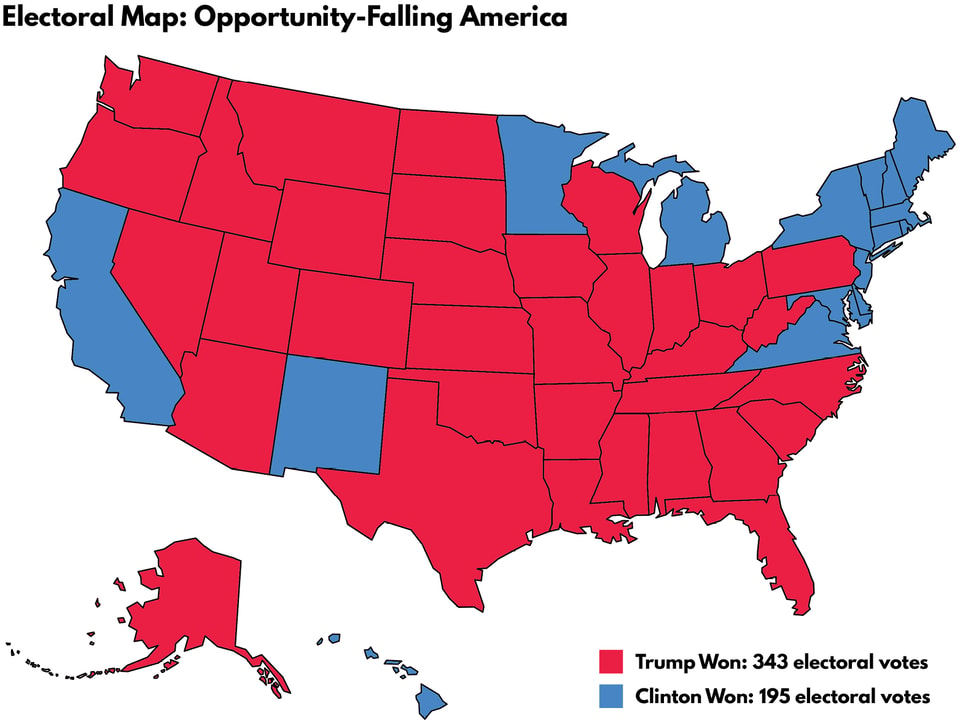
And if the 2016 election were held in only the 1,029 green counties that gained businesses between 2005 and 2015, Hillary Clinton would have won by 6.4 million votes, 54.6% to 45.4%, and by 286 to 252 in the electoral college.
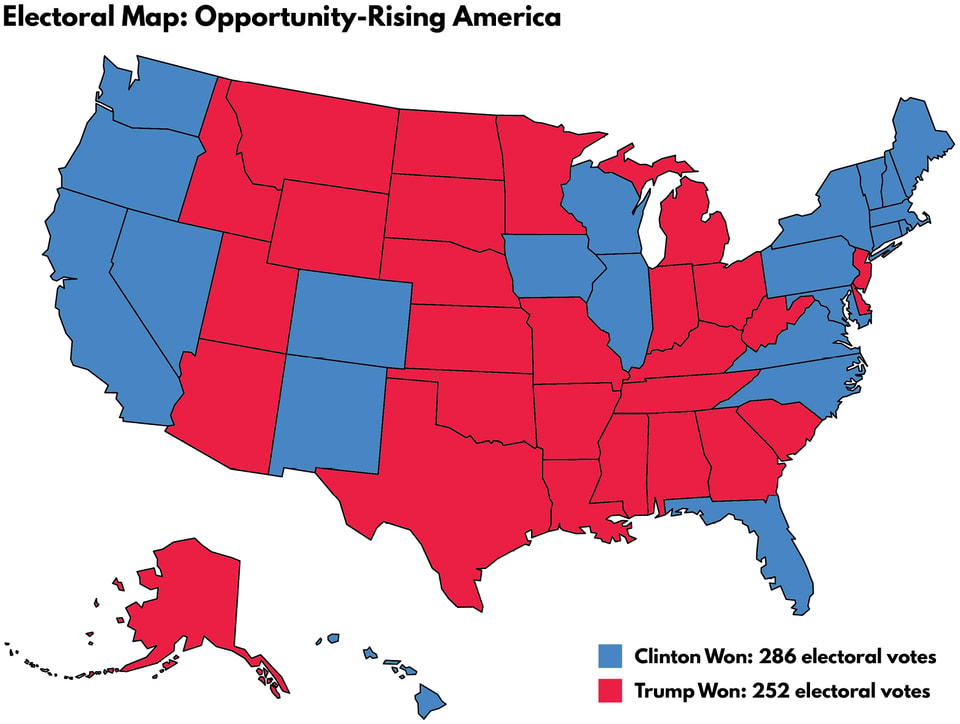
Just as the concentration and polarization of the economy was new, so was the polarization of the electorate. In these exact same sets of counties, George W. Bush and John Kerry performed almost identically. Bush won by 3.8-points in the 2,109 yellow counties and won the electoral college 314 to 224.
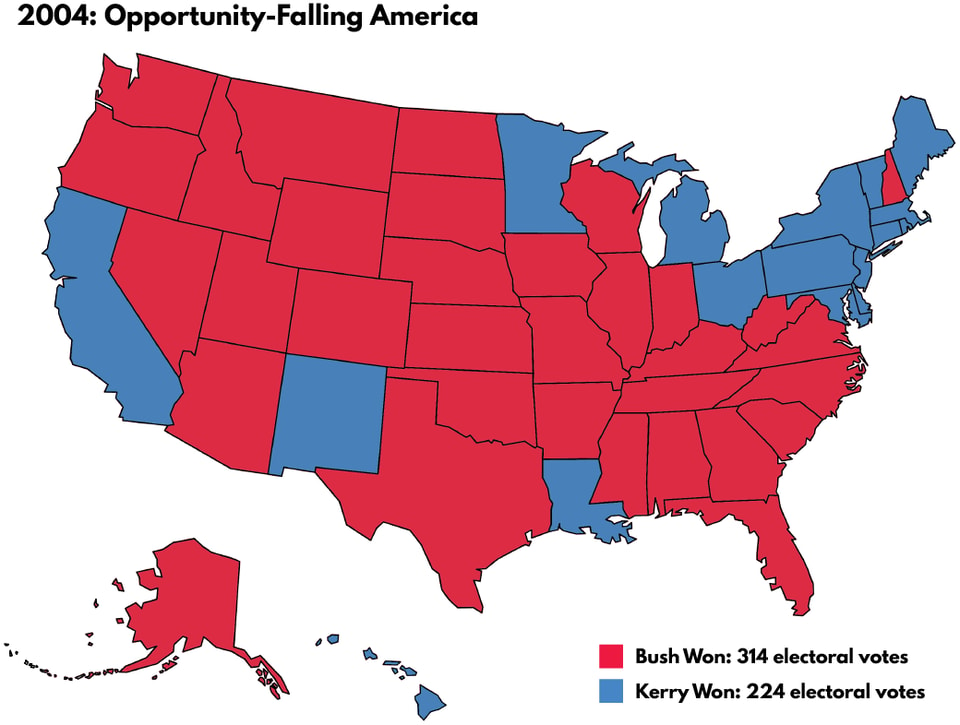
And Bush won the 1,029 green counties by 1.2-points and by 327 to 211 in the electoral college. The spread between these two sets of counties went from a miniscule 2.6-points in 2004 to a chasm of 15.2-points in 2016.
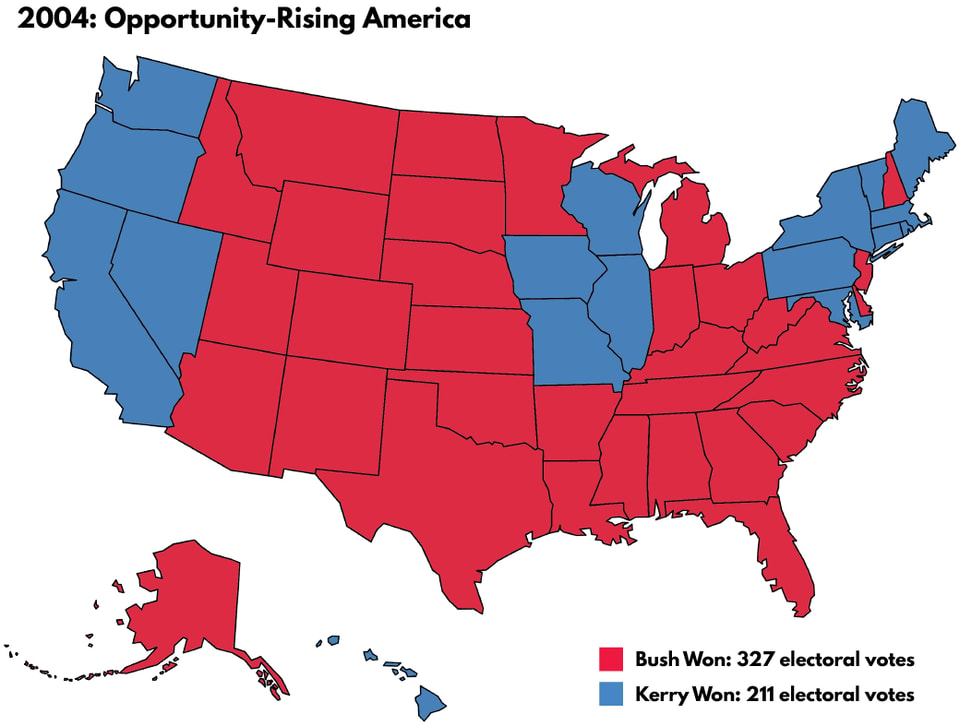
The opportunity crisis in America is real. Two-thirds of America’s counties are leaking opportunity. And even in the green counties there are enclaves where opportunity is barren due to discrimination, economic neglect, or historical disparities. Twelve big ideas to bring more opportunity to more people and more places can be found here.
